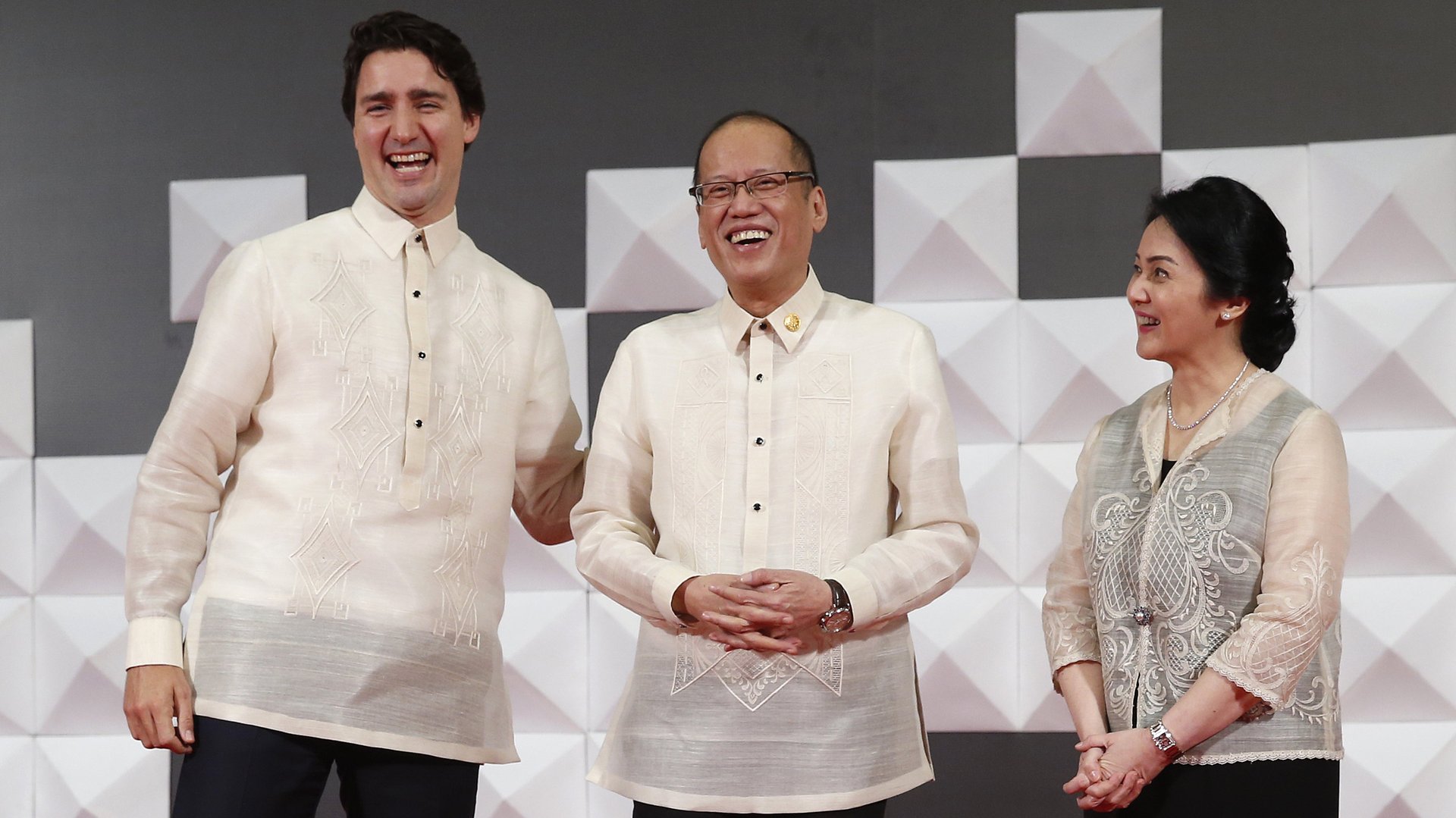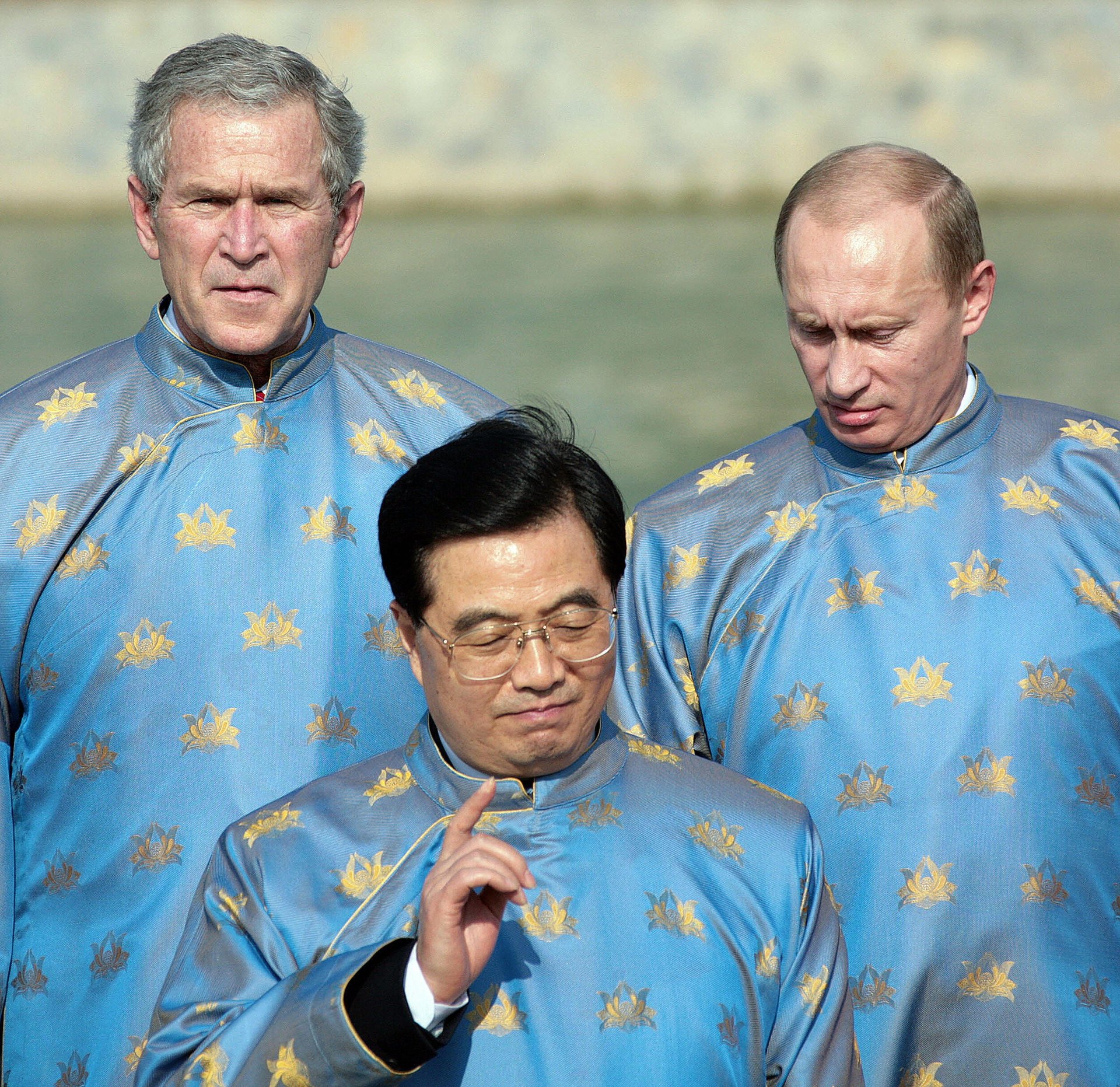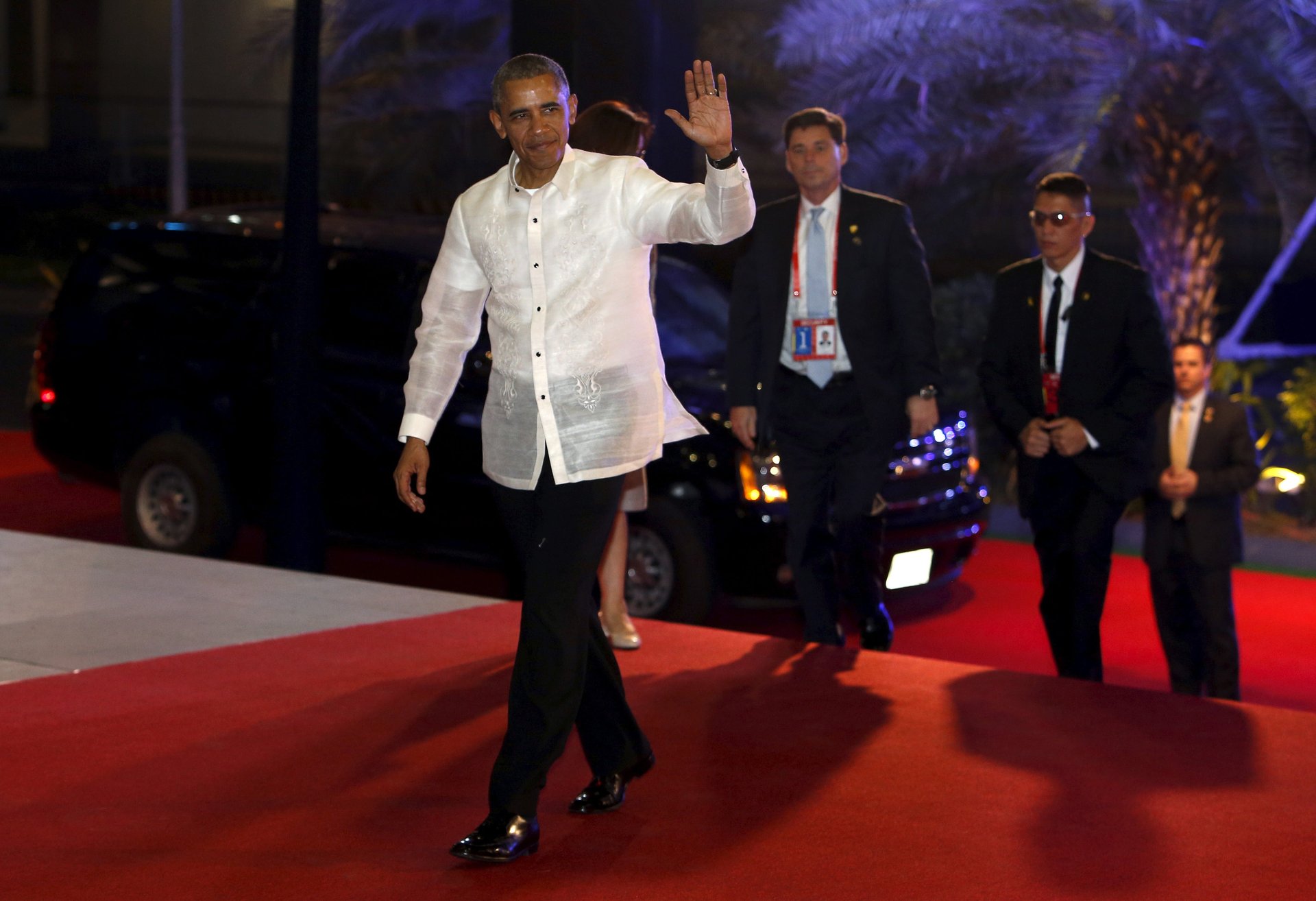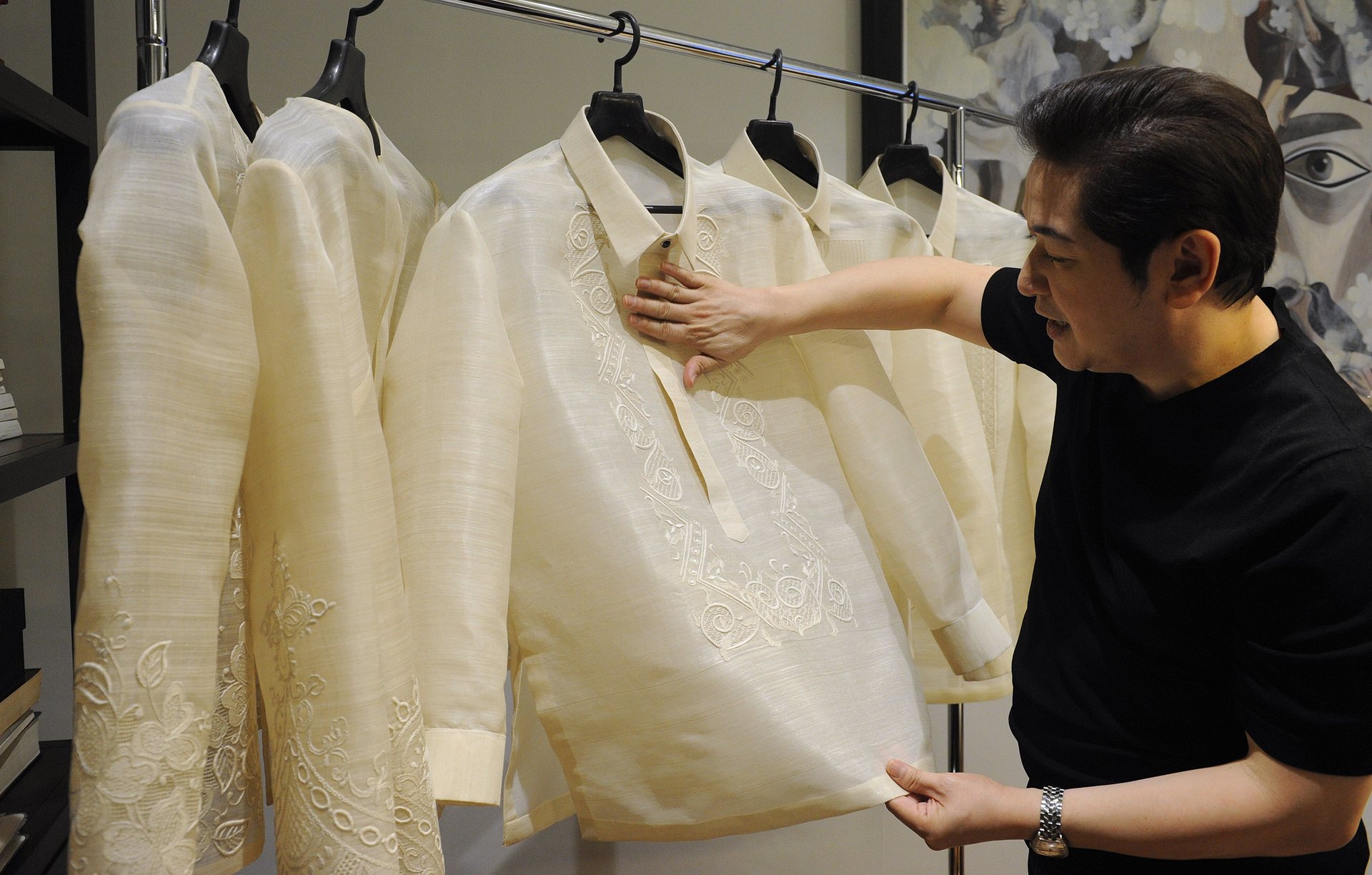There are hundreds of years of history in the “silly shirts” world leaders are wearing at the APEC summit
The awkward “silly shirts” photo of world leaders in the traditional clothing of their host nation has become a ritual at the annual Asia-Pacific Economic Cooperation (APEC) summit. Highlights over the years have included the boxy ponchos of Chile in 2004, the silky ao dai tunics in Vietnam in 2006, and last year’s rather amazing “Star Trek” conference in Beijing.


The awkward “silly shirts” photo of world leaders in the traditional clothing of their host nation has become a ritual at the annual Asia-Pacific Economic Cooperation (APEC) summit. Highlights over the years have included the boxy ponchos of Chile in 2004, the silky ao dai tunics in Vietnam in 2006, and last year’s rather amazing “Star Trek” conference in Beijing.
This time around, the Philippines plays host. As the 21 APEC attendees, including Chinese president Xi Jinping, US president Barack Obama, and Canadian prime minister Justin Trudeau, discuss matters of global importance, they do so wearing the barong tagalog, a semi-sheer shirt woven from pineapple fiber.

The wearers must be breathing a sigh of relief for the relatively subdued style of the shirt. But the point of any APEC getup is that it’s a gesture of respect, and in this instance, it honors a garment that encapsulates the complex history of the Philippines.
“It’s an indigenized version of the western shirt,” says Gino Gonzalez, a fashion historian and co-author of a new book on the evolution of the terno, the Philippines’ national dress. ”It’s like an externalization of your nationality.”

The indigenous peoples of the Philippines existed in various tribal communities for thousands of years before explorer Ferdinand Magellan first landed a Spanish expedition there in 1521, only to be killed soon afterward. But contact with Europe changed the course of Filipino history, as Spain colonized the islands a few decades later and its heavily Catholic influence infused the local culture.
The Spaniards also brought pineapple to the islands—today the Philippines is one of the world’s largest producers of pineapple—and before the 1500s were out, Filipinos were making cloth from its fibers (pdf). It’s not exactly clear when the current version of the barong emerged, but it was in existence by the late 1700s, according to Gonzalez. ”If you look at paintings by local masters, they were rendering the barongs worn by the upper class,” he says.
Over the centuries the garb has continued to evolve, developing elaborate embroidery thanks to the continued influence of Europe, and now even reflects the touch of one of fashion’s most famed recent couturiers.
“One designer whom I thought really revolutionised Filipino fashion was Jean Paul Gaultier, who was a tailor for Pierre Cardin when he came here [in 1974] to open the Manila boutique,” said Imee Marcos, the eldest daughter of former first couple Ferdinand and Imelda Marcos, and the governor of the northern Philippine province of Ilocos Norte, in an interview with luxury magazine Philippine Tatler. ”My father, fitness buff that he was, was so tired of these loose barongs with feminine embroidery. Gaultier updated the barong with the Elvis Presley collar, the pointed cuffs, and the tapered fit. He also updated the embroidery so that it went in a straight line down the barong, lengthening his figure.”
The barongs worn by the world leaders at the APEC summit, custom designed for each wearer by Filipino designer Paul Cabral, took four months to make—a blip, really, next to the hundreds of years of cultural history the shirts represent.

Outside of global summits, the barong is still donned for weddings and for everyday life.
“The great thing about the barong, it evolved in such a way that it’s still wearable as casualwear,” Gonzalez says. “Security guards wear it; office workers wear it.”
And now world leaders are wearing it, too.